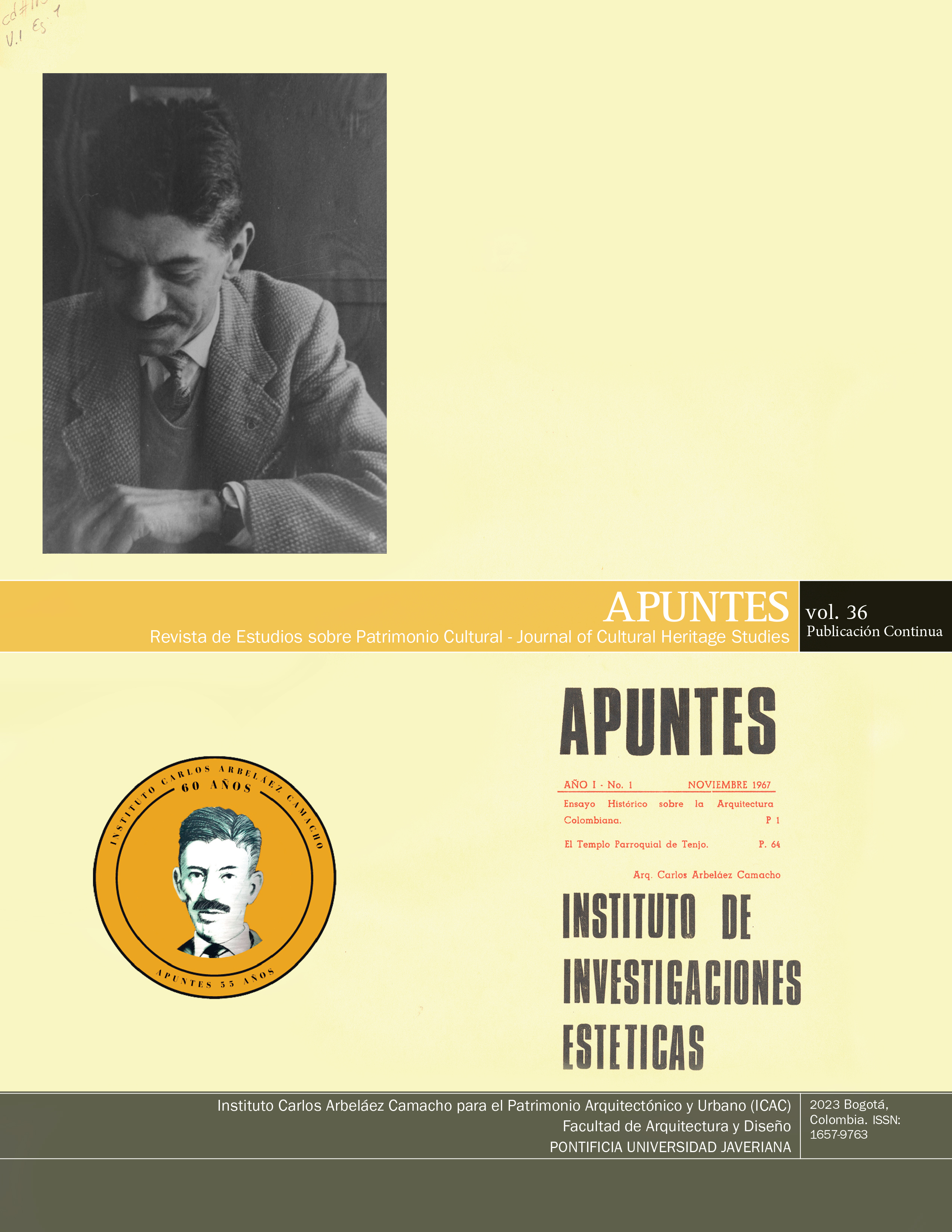Resumo
El club del Socorro es una corporación representativa de El Socorro y su condición como ciudad declarada monumento nacional y pueblo patrimonio de Colombia, cuyas sedes han sido representativas del patrimonio cultural y los imaginarios históricos que fortalecen destinos turísticos y espacios significativos del patrimonio urbano en la provincia comunera. A partir de las consecuencias del incendio del 11 de agosto de 1973, el artículo tiene como objetivo describir la importancia que tuvo la casona histórica que sirvió como casa de gobierno al ser adecuada como sede del club (1941-1973) y su traslado al patrimonio creado como ‘Quinta Fominaya’, antes de ser adecuada como actual sede del club (1974-2021). La investigación cualitativa mediada por análisis de contenidos documentales y orales concluye que, mientras el incendio fortaleció las representaciones históricas y los imaginarios culturales sobre la sede del club hasta 1973, paralelamente las acciones y discursos de historiadores locales justificaron la creación y apropiación de un sitio histórico apropiado como lugar patrimonial.
Alcaldía de El Socorro. (2015). Turismo. Quinta Fominaya. https://cutt.ly/AnJZvBs
Archivo General de la Nación (AGN), Sección Colonia, Fondo Milicias y Marina.
Arnicol. (1973, agosto 15). Llegan auxilios para El Socorro. Vanguardia Liberal.
Caneva, V. (2007). Clubes sociales: Espacios de reconstrucción y consolidación de identidades urbanas. Cuadernos de Historia de las Ideas, 1(1), 1-6.
Club del Socorro (CS), Archivo histórico, Carpeta Escrituras.
Club del Socorro (CS), Archivo histórico, Carpeta Fotografías digitales.
Club del Socorro (CS), Archivo histórico, Libro de Actas de la Junta Directiva.
Gavassa, E. (2005). Club del Comercio, una historia íntima (1942-1986). Club del Comercio de Bucaramanga.
Giuliano, J. (2017). El club social como representación social y modelador de la élite de La Rioja al comienzo del siglo XX. Ágora Unlar, 2(3), 10-29.
Gómez, R. (1968). Socorro, cuna de la libertad colombiana 1886-1968. Casa de la Cultura de El Socorro.
Kalifa, D. (2019). Escribir una historia del imaginario (siglos XIX-XX). Secuencia, 105 (1757), 1-17.
León, G. (1973, agosto 13). Incendio en El Socorro. 20 millones en pérdidas. Vanguardia Liberal, pp. 6-7.
Losada, L. (2006). Sociabilidad, distinción y alta sociedad en Buenos Aires: Los clubes sociales de la elite porteña (1880-1930). Desarrollo Económico. Revista de Ciencias Sociales, 45(180), 547-572.
Pérez, L. (2017). La batalla de Cachirí (1816). Representaciones históricas y monumentales sobre la derrota militar de Custodio García Rovira. Anuario de Historia Regional y de las Fronteras, 22(1), 71-87.
Pérez, L. (2021). Geografía turística e histórica geográfica del Socorro. Autor.
Ripoll, M. (1997). El Central Colombia. Inicios de industrialización en el Caribe colombiano. Boletín Cultural y Bibliográfico, 34(45), 59-92.
Rodríguez, H. (1963). La antigua provincia del Socorro y la Independencia. Academia de Historia de Colombia.
Rueda, J., y Velásquez, K. (2019). Ruta turística sombre mitos y leyendas urbanas del municipio de El Socorro (Santander). En L. Pérez y A. Acevedo (eds.), Patrimonio cultural de Santander (pp. 53-62). División de Publicaciones UIS.
Sautu, R. (2016). La formación y la actualidad de la clase media argentina. En G. Kessler (comp.), La sociedad argentina hoy (pp. 163-183). Siglo XXI.

Este trabalho está licenciado sob uma licença Creative Commons Attribution 4.0 International License.
Copyright (c) 2023 Luis Rubén Pérez Pinzón


